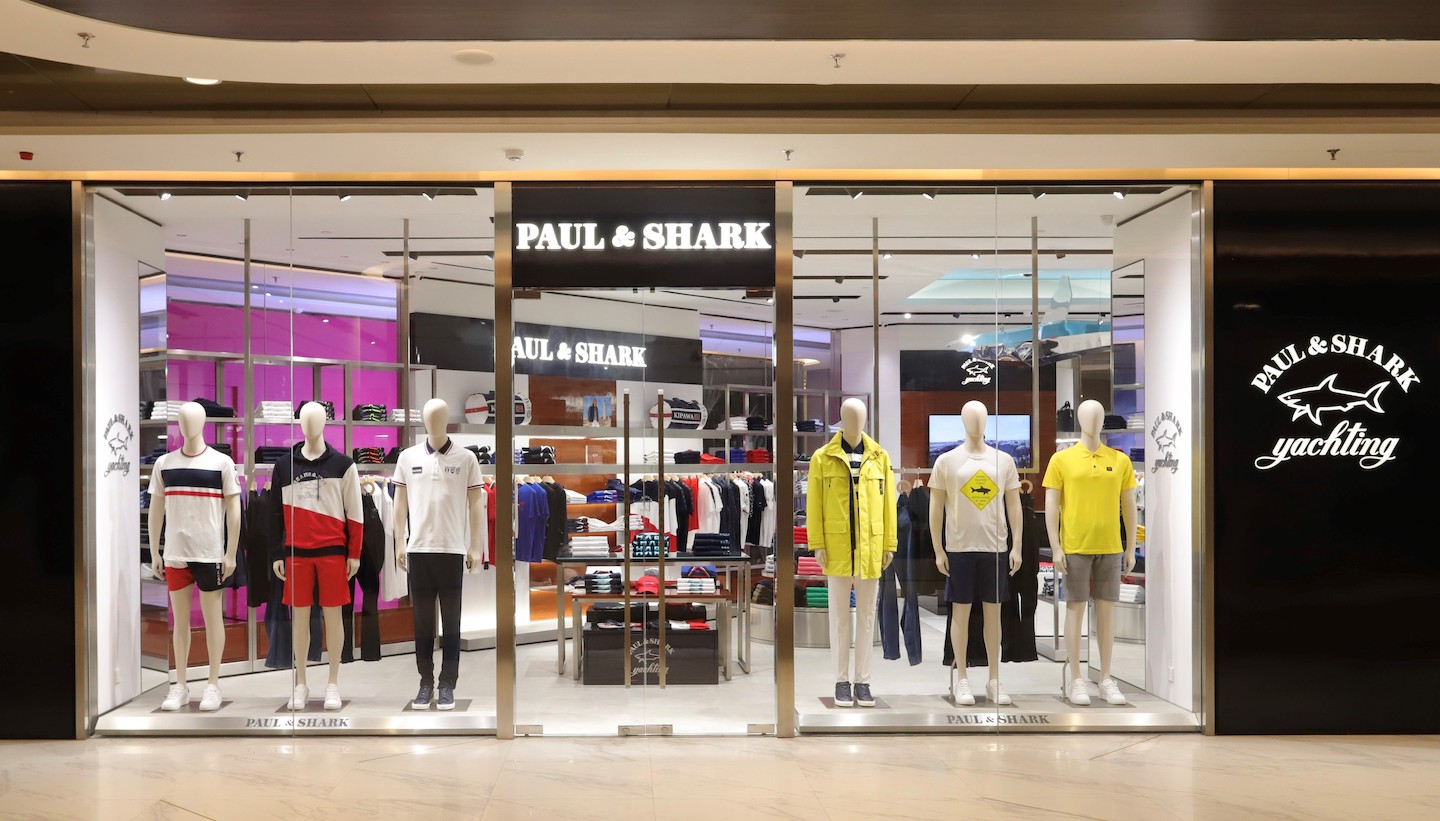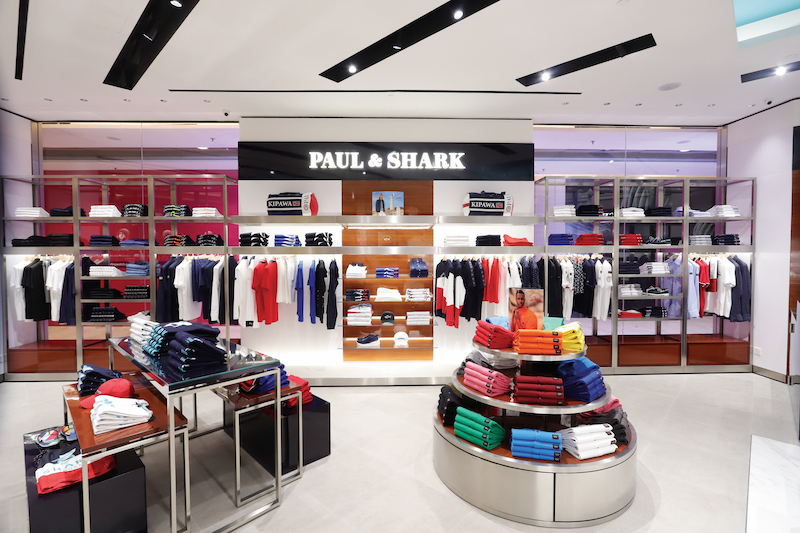
Get acquainted with a brand that started with water and is immersed in Italian know-how, tradition and innovation (All photos: Paul&Shark)
Want to look as sharp as a shark without hurting a fin of those stunning sea creatures, and also contribute to a conservation fund that raises awareness of and protects them? Step into the first Paul&Shark flagship store in Malaysia and get acquainted with a brand that started with water and is immersed in Italian know-how, tradition and innovation.
“Paul&Shark” was an inscription on the sail of an 18th-century clipper that caught the eye of Paolo, the eldest son of Gian Ludovico Dini, during a visit to a small sailmaker’s shop in Maine, the US, in the 1970s. The Dini family had founded Maglificio Daco, a knitting mill in Varese, Italy, in 1921. There, workers took care of every aspect of production, from sourcing yarn to produce fabrics, to packaging.
Paolo’s “find” led to the Paul&Shark C0P918 pullover, rolled out in 1978, a sailing sweater that announced the birth of a brand that believes “you cannot control the wind but you can adjust your sails”. It has, over the generations, followed a course inspired by comfort, beauty and durability, steered by the compelling demands of the times.
Clothes and accessories anchored to seafaring traditions are available in the company’s 280 monobrand stores across 73 countries worldwide. The C0P918 pullover known for its packaging — a metal can used on board ships as a multipurpose container — was the first of a range of water-repellent yachting knitwear that keeps water and wind out and offers sporty comfort with a twist of glam. Many other collections have followed since, sealing the company’s reputation for luxury sportswear that is resistant to weathering and fashioned from durable materials with Italian style.
paulshark_store_interior_2.jpg

The Starhill in Kuala Lumpur, where shoppers can indulge in experiential retail in an intimate boutique environment, is a fitting home for the 140 sq m flagship store, which will carry iconic Paul&Shark pieces. Among them are organic polo shirts that encapsulate casual sophistication, with the brand’s badge logo embroidered on the chest available in 100 colours, and classic outerwear that the young will be happy to inherit from their fathers. Knitwear in different shades of blue, like the depths of the sea, remains a staple, with Merino wool, crew-neck sweaters stitched with suede, nylon and cotton details a perennial favourite.
Daniel Beltsos, director of YTL Retail, says Paul&Shark in KL is the brand’s first and exclusive flagship boutique. “It is aligned with the luxury lifestyle positioning of The Starhill, Home of the Tastemakers, to appeal to the gentlemen who have a passion for fashion, timepieces, cigars, fine food and wine.”
Designed for the active outdoor lifestyle, the brand’s quality leisurewear is especially for those who love yachting, sailing and golf, Beltsos adds.
As tradition, craftsmanship and a keen perception of customer needs take Paul&Shark forward, the rudder that directs its course is technology, state-of-the-art equipment that places conservation as a priority, to keep man, land and sea safe because the ocean is the planet’s life-support system. A healthy ocean regulates climate and reduces the impact of climate change — crucial, with the dire signs of global warming that have surfaced.
g1160747.jpg

Conservation starts with environmental awareness for this green company since 2012. It has a sustainability manifesto centred on using authentic and sustainable materials and technologies that increase efficiency in water and energy consumption and reduce its footprint on the environment.
Putting its hand into this challenge, the brand aims to save the sea by using raw materials and components derived from plastic recovered from the ocean. Seaqual, a community initiative, turns the polyester filaments of plastic bottles into yarns. Under Second Life, a project grounded in the belief that no garment should be wasted, items with defects are repaired by hand and made available to customers as unique pieces, of which 20% of the proceeds go to sustainable projects it works with globally.
Abandoned fishnets have been gathered and regenerated into Econyl, a new nylon that can be recycled, recreated and remoulded again and again to make shirts, jackets, trousers and swimsuits. Organic cotton farmed without pesticides and chemical fertilisers are used in all the company’s collections. And recycled down, a mix of goose and duck down, gives new life to what would otherwise have been discarded.
Using recycled or eco wool helps reduce carbon dioxide and toxic emissions from incinerators and the exploitation of sheep and grazing land. Paul&Shark works with wool growers from Beaufort farm in Tasmania to get cruelty-free, traceable fibres from Merino sheep. Shark Trust, a capsule collection named after and designed in partnership with the British conservation charity, channels 10% of the proceeds from items to the organisation.
Consumers, too, have a safe place among the sustainability efforts carried out by the company, which introduced the EMW shield to insulate pockets in garments. A steel fibre lining and metal resin protect the wearer from potentially harmful electromagnetic waves emitted by mobile devices.
Buoyed by the wind, Paul&Shark is set to sail far. With pride in its past — roots are the foundation of the future — it aims to “reach the modern, conscious consumers who are passionate about environmental causes but also have an eye for fashion”, says president and CEO Andrea Dini, the third generation at the helm today. Keeping in mind that “our appetite to create innovative new products and collections is infinite [but] the planet’s resources are not”, it will stay the course of sustainability to close the loop.
This article first appeared on Sept 20, 2021 in The Edge Malaysia.


